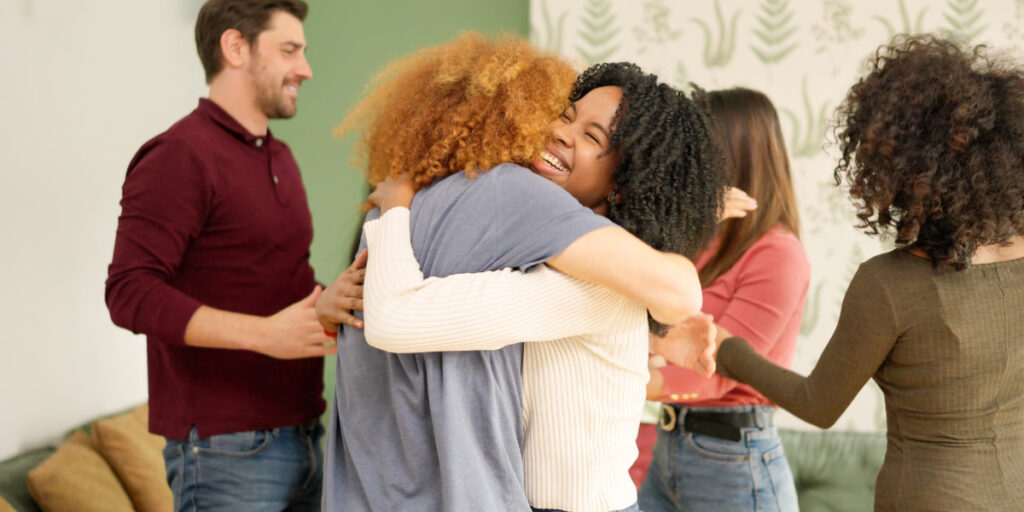
Catching up at a friend’s house or joining a family get-together can be as nerve-wracking as it is exciting. Navigating visiting etiquette ensures your host feels relaxed and appreciated instead of overwhelmed. A few thoughtful actions make all the difference.
Entering someone’s home brings a unique social dynamic. Proper visiting etiquette helps avoid unintentional blunders, strengthens relationships, and shows genuine respect for a host’s space. Even small details—like where you sit or how you react to a pet—can shape the entire visit.
We’ll break down actionable do’s and don’ts, from your first text to your final goodbye. Dive in to discover practical tips and real-world examples that will make you the guest everyone looks forward to having over.
Arriving with Intention: Setting the Right Tone Immediately
From the moment you set foot on the porch, your actions set expectations. Arriving on time and greeting the host warmly builds immediate trust and helps the visit start positively.
If running late, a quick text like, “I’m stuck in traffic but should be there in 10 minutes,” smooths any worries. Letting the host know your updated timing shows reliability—an essential part of visiting etiquette that people genuinely appreciate.
Respecting Entry Rituals in Every Home
Watch for cues when you enter. If you notice a row of shoes by the door, ask, “Would you like me to take off my shoes?” This simple gesture honors the host’s household norms and immediately eases any tension.
Being observant and asking gently sets a positive impression. Hosts may have traditions (like hand washing). Mirror their actions and offer: “Should I wash my hands here?” This demonstrates awareness of visiting etiquette and concern for their comfort.
On your next visit, notice what others do—then quietly follow suit. Guests who read the room quickly become easy to welcome back. Subtle attentiveness creates mutual respect and smoothes future invitations.
Greeting Each Person with Sincerity
Extend a greeting to everyone present, not just the host. A friendly “Hi, I’m Jenna, thank you for having me!” helps forge connections and sets a cheerful tone.
If the gathering is large, introduce yourself to a couple of people at a time. Direct eye contact and a genuine smile convey sincerity; avoid checking your phone during these first moments.
Wait for a natural pause before moving into deeper conversations. Tailor your approach to the setting: a family dinner might call for quieter hellos, while a game night welcomes upbeat enthusiasm. Adjusting your entrance style is a core part of polished visiting etiquette.
| Entry Situation | Action to Take | Host’s Likely Response | What to Do Next |
|---|---|---|---|
| Doorbell rings, no shoes at door | Ask about shoes | Grateful for asking | Follow host’s answer |
| Handshake at entry | Offer firm handshake | Warm welcome | Smile, make small talk |
| Family gathering | Greet each person | Introductions around | Remember first names |
| Kids/pets visible | Say hello to children/pets | Host appreciates it | Offer kind words |
| Food/drinks ready | Compliment setup | Host beams | Wait before serving yourself |
Bringing Thoughtfulness: Choosing the Right Gestures
Bringing a small gift, following house rules, and respecting food preferences show that you care about the host’s experience, not just your own.
Thoughtful gestures help hosts feel appreciated and lower the pressure. They’re also excellent ways to practice visiting etiquette throughout the encounter, from entry to exit.
Simple Ways to Show Appreciation
Bring a treat that matches the occasion. Flowers or a bakery item on a first visit go further than an expensive bottle of wine. Attach a note: “Thinking of you—thanks for inviting me.”
- Offer to help set the table. It lightens the host’s workload and shows initiative.
- Ask, “Can I take my plate to the kitchen?” after eating to assist post-meal clean-up.
- Comments like, “The house looks gorgeous!” signal appreciation for the host’s effort in preparing their home.
- Respect household quirks—if the cat isn’t friendly, refrain from trying to pet it.
- Ask for a tour if invited, but don’t roam unprompted. Following cues is classic visiting etiquette.
Incorporating these actions leaves hosts with a positive memory tied to your visit, encouraging future get-togethers.
What Not to Bring or Do (Gift and Rule Edition)
Avoid gifts that require effort to manage immediately, such as chilled desserts that need immediate refrigeration, or large floral arrangements lacking a vase.
- Don’t bring food with strong allergens if you’re unsure—ask ahead for known restrictions.
- Skip scented candles unless the host loves them; many people have scent sensitivities.
- Never arrive empty-handed for dinner parties unless told not to; opt for easy-to-share snacks.
- Avoid phone use at the table or loud calls. Leave the room for urgent conversations.
- Skip taking social media photos unless you’ve got express permission; some hosts value privacy.
Choosing low-maintenance gifts or following these ‘don’t’ rules is a respectful hallmark of elevated visiting etiquette. You’ll avoid accidental stressors or faux pas.
Respecting Household Boundaries from the Start
Noticing and adhering to unwritten rules—where to sit, places off-limits, and quiet hours—demonstrates that you value the host’s comfort as much as your own enjoyment.
Hosts appreciate when guests show visiting etiquette by quietly gathering cues from the household routine—and acting accordingly.
Following Directions Like a Pro
Hosts may say, “Make yourself at home.” Take this literally, but with boundaries: ask before grabbing snacks or exploring other rooms, since not every area is guest-ready.
If unsure about where to put your coat or whether to take a call in another room, say, “Is it alright if I use the den for a quick call?”
Visiting etiquette means striking a balance between feeling welcome and understanding you’re a guest—mirroring what other guests do helps, too. Notice when rooms are closed or off-limits, and let that shape your use of space.
Handling Space When the House Is Full
Sit where you’re invited, and if there’s limited seating, offer yours to elderly guests or children. Saying, “Would you like this seat?” displays noticeable kindness that others observe.
Don’t move or rearrange furniture unless you’re asked for help. Subtle gestures, like tidying your area or collecting empty cups, show respect without overstepping.
If more guests arrive and seating’s tight, check with the host—“Should I move to the porch or help bring in chairs?” Small moments like these keep the event running smoothly and reinforce your credibility as a considerate guest.
Handling Food and Beverage Situations Smoothly
Graciously navigating food and drink shows real-time social skill. A well-timed compliment, polite serving habits, and mindful sampling will ensure everyone feels comfortable and included.
Don’t surprise your host last minute with dietary restrictions. A courtesy heads-up a day before lets them plan thoughtfully, which is a core part of visiting etiquette.
Tasting, Complimenting, and Declining Politely
When served something unfamiliar, try a small amount. Say, “This is new for me, thank you for making it!” Positive feedback—even when a dish isn’t your favorite—shows gratitude for the effort.
If you can’t eat something, keep it brief: “Thanks, I have to skip this one due to allergies.” Most hosts won’t take offense with a simple, friendly explanation.
Remember to ask before taking seconds. Saying, “May I have another helping?” lets others serve themselves first and prevents awkwardness if food is being rationed. This mindfulness is a building block of strong visiting etiquette.
Drink Choices and Alcohol Etiquette
Wait for the host to offer drinks and toast before sipping. If non-alcoholic drinks are served, happily accept what’s there—never request special stock unless it’s medical.
Decline alcohol gracefully: “I’m driving tonight, so I’ll stick with water, thank you.” Your candor helps the host understand your preference without pressure.
Handle spills discreetly: “I’m so sorry, can I grab a cloth?” and clean up if you made the mess. Offering practical solutions demonstrates reliability, a trait welcomed in every social gathering.
Staying Engaged Without Taking Over the Room
Good guests mingle, listen, and let everyone enjoy the atmosphere. Listening as much as you talk, and paying attention to invisible group rhythms, strengthens your social reputation.
Participating without dominating matters in both small dinner parties and larger backyard celebrations—keeping the focus on the shared experience is visiting etiquette in action, not just concept.
Joining Group Activities with Consideration
When a board game starts, ask, “Can I join next round?” Wait for a natural break before inserting yourself; nobody likes a guest who jumps in mid-turn.
If conversation drifts to an unfamiliar topic, follow along without redirecting abruptly. Supporting group interests—laughing at anecdotes or asking questions—creates rapport.
Stepping back so quieter guests can participate is a subtle superpower. Say, “Rachel hasn’t shared yet—let’s hear her story.” This keeps social energy balanced and assures everyone feels heard.
Respecting Quiet Moments and Side Conversations
If you find yourself outside a main conversation, notice body language. Face people and listen, but don’t intrude on private chats. Instead, chat with someone nearby or offer help in the kitchen.
When the mood gets quieter—say, after dessert—lower your voice accordingly. Mirroring the host’s behavior is a real-time application of visiting etiquette.
If someone looks tired, lighten the atmosphere without forcing excitement. Example: “Would anyone like coffee?” This creates space for winding down while still being inclusive of all guests.
Exiting Gracefully and Following Up the Next Day
Saying goodbye at the right moment—neither too early nor too late—shows you respect the host’s time. Appreciate their effort every time you leave, and follow up thoughtfully afterwards.
An exit planned in advance (“I’ll need to leave by nine, if that works!”) prevents last-minute confusion and helps hosts pace the event for everyone’s comfort.
Showing Appreciation as You Leave
Thank your host with more than a quick “Bye, thanks!” Try: “I had a great time—thank you for such a wonderful evening.” Personalizing your gratitude creates lasting goodwill.
Leave your area tidy or offer last-minute assistance: “Do you need help clearing plates before I go?” When declined, step aside politely—that’s visiting etiquette at its best.
Gather your things quietly; double-check you’re not forgetting keys, sunglasses, or wrappers. Ensuring you leave no trace makes a subtle but memorable impression every time.
Sending a Kind Note or Message
The next day, a brief message matters more than a long one: “Thank you again for yesterday! The chili was amazing, and I loved meeting everyone.” Sending even a single line is thoughtful.
Handwritten notes add an extra touch for special occasions like birthdays or family reunions. Mailing a card in the days after shows care and ups your visiting etiquette game.
Hosts remember guests who close the loop—prompt, genuine notes reflect strong social awareness and almost guarantee a warm welcome next time.
Frequently Asked Questions
What is one thing I should always do upon arriving at a friend’s house?
Greet the host warmly, remove your shoes if custom, and ask where to place any outside items you brought. These steps set a respectful tone immediately.
Should I bring something every time I visit someone’s home?
While not mandatory for casual drop-ins, bringing a small item (snack, flowers, or a personal note) adds a thoughtful touch and shows you value the invitation.
How should I handle dietary restrictions as a guest?
Communicate any restrictions well before the event. If you forgot, politely skip the food you can’t eat without making a fuss, and thank the host for their effort.
What’s the best way to leave a positive impression?
Engage with the group, offer genuine compliments, and always follow up with a thank-you text or card the next day. Consistency is the key here.
Is it okay to use my phone while visiting someone?
For emergencies or urgent messages, quietly excuse yourself and use your phone away from the main area. Otherwise, stay attentive and present with your hosts and fellow guests.

Everyday Etiquette Abroad
Learn essential etiquette abroad to navigate cultures respectfully, avoid missteps, and enjoy more meaningful international experiences.

